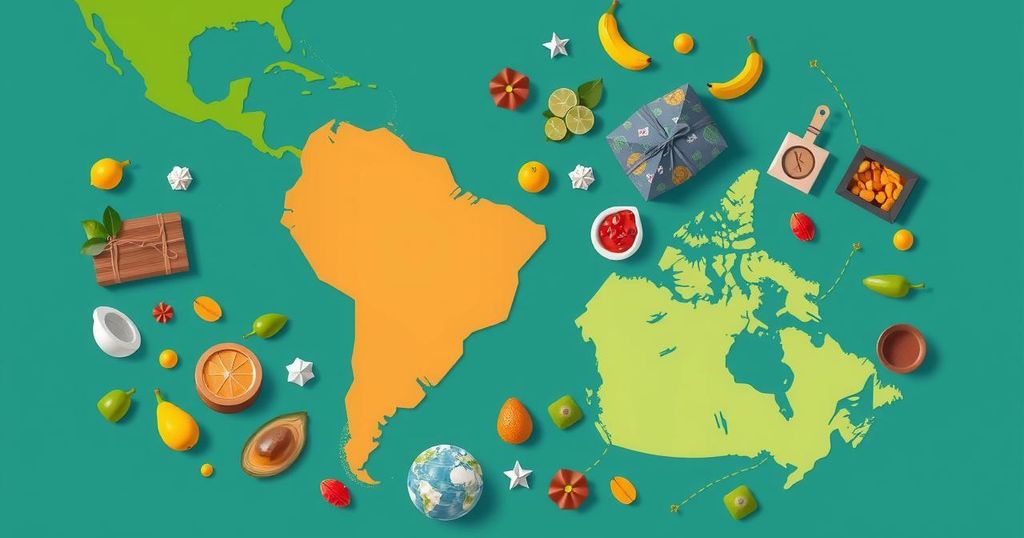Examining Canada’s Trade Diversification: Could South America be the Key?
Canada’s search for trade diversification amidst U.S. protectionism may lead to exploration of opportunities in South America, specifically through the Mercosur trade bloc. Experts highlight that while initial negotiations began in 2018, skepticism remains regarding the potential benefits of a formal agreement, especially in light of similar export products and existing trade relationships with other regions.
The rise of American protectionism is prompting Canada to explore new trade partners, particularly looking southward to South America as a potential opportunity. With the United States becoming an increasingly unpredictable partner, Canada is keen to diversify its trade relationships. Rambod Behboodi, an international trade lawyer, highlights that Mercosur stands as the largest trade bloc without a current agreement with Canada, which necessitates renewed negotiations for a free trade deal.
Mercosur, which translates to “southern common market” in Spanish, was established in 1991 by Argentina, Brazil, Paraguay, and Uruguay. The agreement eliminated customs duties among member nations and imposed a common external tariff on non-member imports, averaging 11.5 percent. Venezuela was a member until its indefinite suspension in 2016, while Bolivia joined in 2024. Despite initiating free trade negotiations with Mercosur in 2018, progress has been slow, with the European Union only finalizing its agreement last year after 25 years.
Behboodi emphasizes the competitive disadvantage Canada might face without a trade agreement with Mercosur, particularly as EU countries will gradually eliminate tariffs on over 90 percent of merchandise. In 2022, Brazilian exports to Canada grew by nine percent, marked by significant products like gold, alumina, and aircraft. However, Canadian imports from Brazil saw an 18 percent decline due to currency fluctuations.
Evelyne Coulombe, Canada’s ambassador to Germany, advocates for closing a Canada-Mercosur free trade agreement, citing potential benefits in sectors such as oil and gas, renewable energy, and information technology. However, some experts, including Fen Olser Hampson, express skepticism regarding the viability of such an agreement. Hampson notes that Canada and Brazil often export similar commodities, complicating mutually beneficial trade.
Instead, Hampson encourages Canada to focus on strengthening trade partnerships with Asia and Europe. Canada already holds 15 free trade agreements, including with several South American nations. Bernardo Blum, an economic policy professor, suggests that Canada should evaluate the benefits of the EU-Mercosur agreement as a roadmap for its own negotiations, though he cautions that a Canada-Mercosur agreement might have limited impact based on previous experiences with agreements like CETA.
In conclusion, while the notion of trade diversification with South America, particularly through Mercosur, presents a potential avenue for Canada amid rising protectionism from the United States, experts remain divided on the feasibility and benefits of such an agreement. Although trade between Canada and Brazil has shown growth, skepticism persists regarding the compatibility of product exports and the overall impact of a Canada-Mercosur agreement compared to existing trade partnerships with Asia and Europe. As Canada navigates its trade strategy, careful consideration of past agreements and current global trade dynamics will be essential.
Original Source: financialpost.com




Post Comment